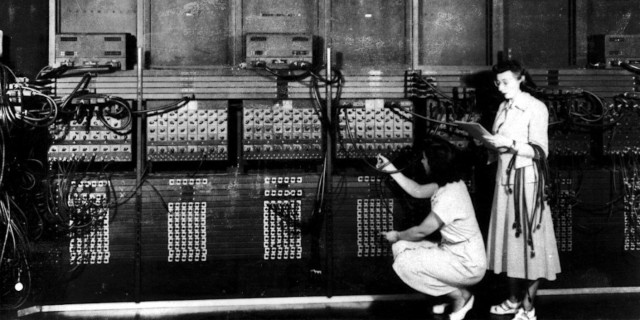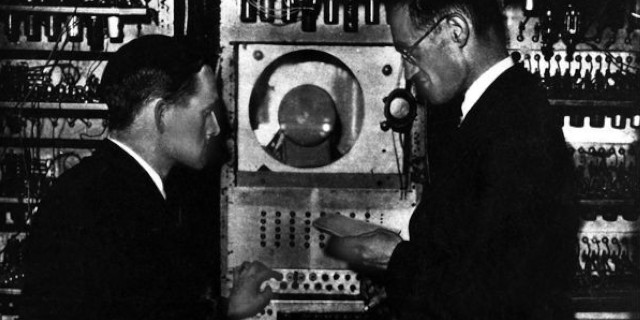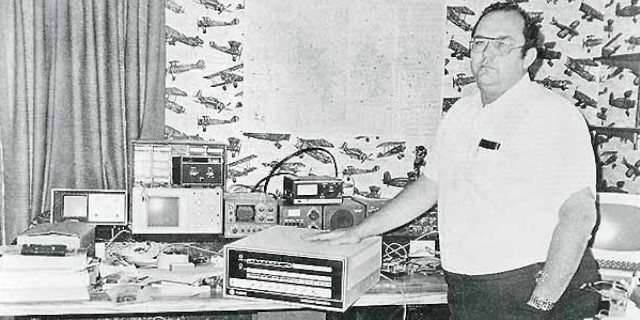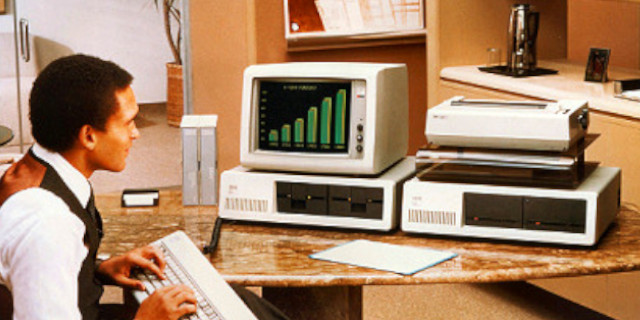
Computing goes back to ancient times, to tokens, abaci, and other devices that were pure hardware.
Software consists of programming instructions and data that tell the computer how to execute various tasks and hence requires the concept of a general-purpose processor.
The actual term ‘software’ wasn’t used until the late 1950s.

The first known computer algorithm was written by Charles Babbage in the 19th century for his planned Analytical Engine, to translate Luigi Menabrea's work on Bernoulli numbers for machine instruction. However, this remained theoretical only.
The first modern theory of software was proposed by Alan Turing in his 1935 essay Computable numbers with an application to the Entscheidungsproblem (decision problem).
This eventually led to the creation of the twin academic fields of computer science and software engineering, which both study software and its creation. Computer science is more theoretical (Turing's essay is an example of computer science), whereas software engineering is focused on more practical concerns.
Prior to 1946, software intented as programs stored in the memory of digital computers did not exist. The first electronic computing devices were rewired in order to "reprogram" them. The ENIAC, one of the first electronic computers, was programmed largely by women who had been previously working as human computers. Engineers would give the programmers blueprints of the ENIAC wiring and expected them to figure out how to program the machine.
Kathleen Booth developed Assembly Language in 1950 to make it easier to program the computers she worked on at Birkbeck College.

Computer scientist Tom Kilburn is responsible for writing the world’s very first piece of software, which was run at 11 a.m. on June 21, 1948, at the University of Manchester in England. Kilburn and his colleague Freddie Williams had built one of the earliest computers, the Manchester Small-Scale Experimental Machine (also known as the “Baby”). The SSEM was programmed to perform mathematical calculations using machine code instructions. This first piece of software took “only” 52 minutes to correctly compute the greatest divisor of 2 to the power of 18 (262,144). Starting with a large trial divisor, it performed division of 262,144 by repeated subtraction then checked if the remainder was zero. If not, it decremented the trial divisor by one and repeated the process.
In the late 1950s and early 1960s, a popular innovation was the development of computer languages such as Fortran, COBOL and BASIC. These languages allowed programs to be specified in an abstract way, independent of the precise details of the hardware architecture of the computer.

IBM began selling software in the late 1960s and early 1970s. This was the first time commercial software was available to the average customer, and the ability to add different types of programs to any computer quickly became popular.
In January 1975, Micro Instrumentation and Telemetry Systems began selling its Altair 8800 microcomputer kit by mail order. Microsoft released its first product Altair BASIC later that year, and hobbyists began developing programs to run on these kits.
In 1976, Peter R. Jennings for instance created his Microchess program for MOS Technology's KIM-1 kit, but since it did not come with a tape drive, he would send the source code in a little booklet to his mail-order customers, and they would have to type the whole program in by hand.
However, eventually programs started to become very large, floppy discs came down in price and started to be used for distributing (computer magazines started to attach cassette tapes or floppy discs), and regular people started to use computers. This brought the practice of printing complete source code listings of entire programs in computer magazines to an end.
Very quickly, commercial software started to be pirated.

Software hit the big time with the arrival of personal computers. Apple released the Apple II, its revolutionary product, to the public in April 1977. VisiCalc, the first spreadsheet software for personal computing, was wildly popular and known as the Apple II’s killer app.
Other companies like IBM soon entered the market with computers such as the IBM PC, which first launched in 1981. The next year, Time magazine selected the personal computer as its Man of the Year.
Software for productivity and business dominated these early stages of personal computing. Many significant software applications, including AutoCAD, Microsoft Word and Microsoft Excel, were released in the mid-1980s.

Open-source software, another major innovation in the history of software development, first entered the mainstream in the 1990s, driven mostly by the use of the internet.
In 1993 IBM released the first publicly available “smartphone” and in 1996 Palm OS hit the market, bringing PDA’s to the masses. In 1999, RIM released the very first Blackberry 850 device and quickly became the worlds fastest growing company.
Mobile applications will find the peak in 2007, when Apple changed computing with the release of the iPhone.

With services like the cloud computing, users did not even need to download software to their computers: they can run programs directly from the cloud with minimal installation. As the internet becames faster and more people had stronger, more reliable internet connections, that was not a problem.
Open-source software, another major innovation in the history of software development, first entered the mainstream in the 1990s, driven mostly by the use of the internet.
In 1993 IBM released the first publicly available “smartphone” and in 1996 Palm OS hit the market, bringing PDA’s to the masses. In 1999, RIM released the very first Blackberry 850 device and quickly became the worlds fastest growing company.
Mobile applications will find the peak in 2007, when Apple changed computing with the release of the iPhone.


